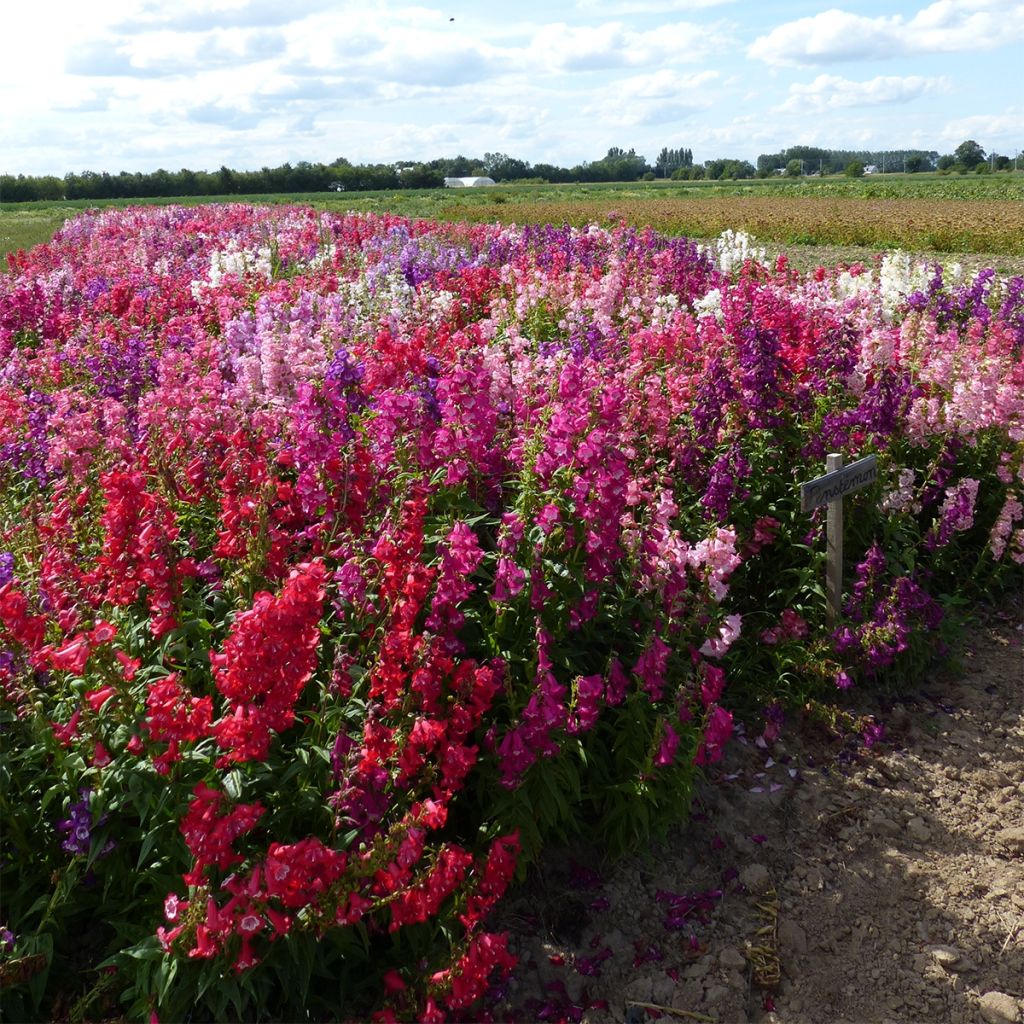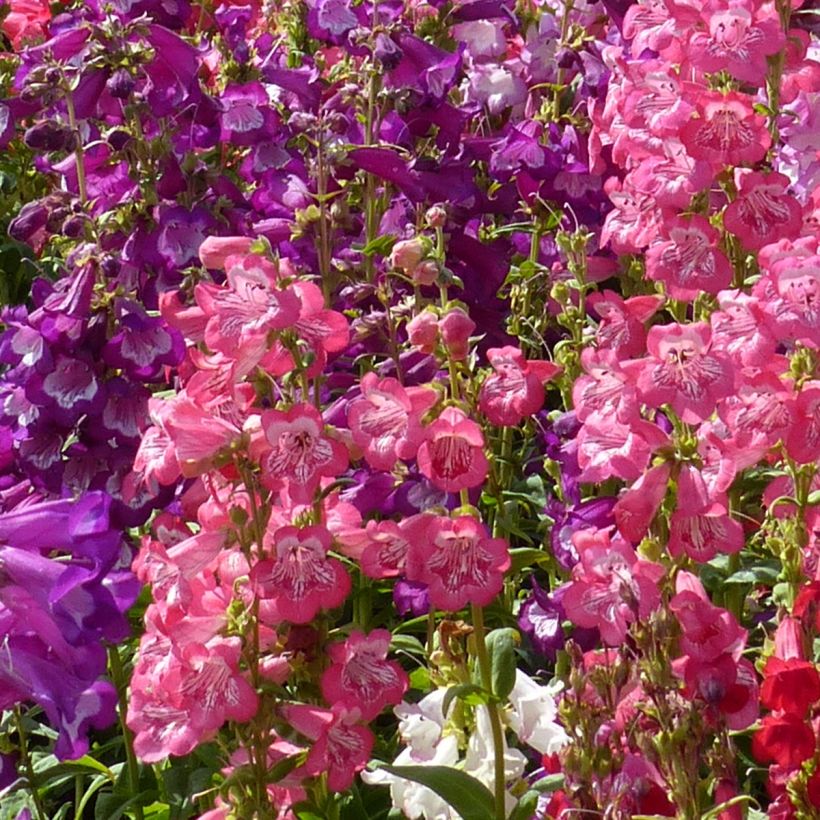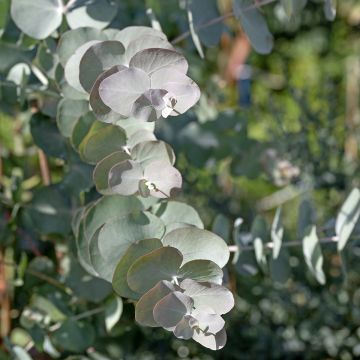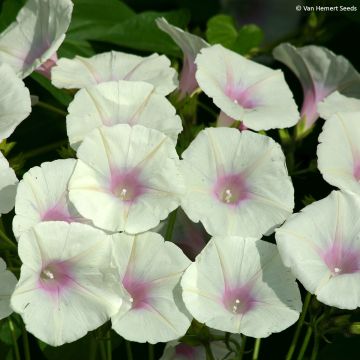

Graines de Penstemon Wedding Bells (hartwegii sensations) - Galane en mélange


Graines de Penstemon Wedding Bells (hartwegii sensations) - Galane en mélange


Graines de Penstemon Wedding Bells (hartwegii sensations) - Galane en mélange


Graines de Penstemon Wedding Bells (hartwegii sensations) - Galane en mélange


Graines de Penstemon Wedding Bells (hartwegii sensations) - Galane en mélange
Penstemon cobaeae Wedding Bells
Penstemon cobaeae Wedding Bells
Cobaea Beardtongue
Inadequate seed packaging. The package emptied during transportation.
Elizabeth , 25/02/2022
Special offer!
Receive a €20 voucher for any order over €90 (excluding delivery costs, credit notes, and plastic-free options)!
1- Add your favorite plants to your cart.
2- Once you have reached €90, confirm your order (you can even choose the delivery date!).
3- As soon as your order is shipped, you will receive an email containing your voucher code, valid for 3 months (90 days).
Your voucher is unique and can only be used once, for any order with a minimum value of €20, excluding delivery costs.
Can be combined with other current offers, non-divisible and non-refundable.
Home or relay delivery (depending on size and destination)
Schedule delivery date,
and select date in basket
This plant carries a 6 months recovery warranty
More information
We guarantee the quality of our plants for a full growing cycle, and will replace at our expense any plant that fails to recover under normal climatic and planting conditions.
Would this plant suit my garden?
Set up your Plantfit profile →
Description
The Penstemon cobaea 'Wedding Bells' in this exclusive mix flower the year of sowing. Gathering some of the best varieties, these short-lived perennials grow very well as annuals, offering a long and abundant flowering in bright and varied colours on satin-like, solid or two-tone bell-shaped flowers. These flowers are truly brilliant on compact plants, covered with semi-evergreen foliage. Weather-resistant and easy to grow, they are a fantastic alternative to snapdragons in annual plant beds and natural gardens.
The Penstemon cobaea is an ephemeral perennial plant native to warm, dry and sunny clearings in Nebraska, Arkansas, southwest Missouri, and Oklahoma on sandy, loamy soil with a tendency towards limestone. The 'Wedding Bells' selection brings together some of the most colourful forms of this species. These rhizomatous plants form basal clumps with fairly wide foliage, measuring about 45 cm (18in) in diameter, from which 16 to 20 floral stems, 50 cm (20in) in height, with linear and lanceolate dark green leaves, rise in summer. The flowering period is long, from June to October, but it is slowed down or stopped in case of prolonged drought. The flowers are campanulate bell-shaped, with a satin-like texture, and their very bright colours range from white, pink, and purple, often with a throat marked with white or purple.
'Wedding Bells' penstemons are used in borders, in perennial beds with Missouri Evening Primrose (Oenothera macrocarpa), agapanthus, caryopteris, Rhodoanthemum hosimariensis, Cape daisies, or mixed with annuals such as love-in-a-mist or snapdragons that resemble them. They will blend among the rocks in a rock garden with santolines, rockroses, or wormwoods. They also perform very well in pots, with proper drainage and regular fertilizer inputs. Penstemons also make excellent cut flowers.
Report an error about the product description
Penstemon cobaeae Wedding Bells in pictures


Flowering
Foliage
Plant habit
Botanical data
Penstemon
cobaeae
Wedding Bells
Scphulariaceae (Plantaginaceae)
Cobaea Beardtongue
Cultivar or hybrid
Other Thompson and Morgan seeds
View all →Planting and care
Sowing:
Sow Penstemon seeds indoors or in a greenhouse from February to April on the surface of good quality compost, covering them with a very thin layer of compost or vermiculite. Place the seed tray in a mini-greenhouse at a temperature of 15-20 °C, or in a transparent polyethylene bag until germination, which can take 1 to 4 months. Keep the compost moist but not waterlogged and do not exclude light, which promotes germination.
When the seedlings are large enough to handle, transplant them into 8cm (3in) pots in trays and grow the plants in cooler conditions. When all risk of frost has passed, gradually acclimatize them to outdoor conditions for 7 to 10 days before planting them outside. Space the plants 30cm (12in) apart. Choose a fertile, light, and well-drained soil in a sunny or semi-shaded position. Penstemons can tolerate dry soils, which encourage them to go into dormancy, but they dislike heavy soils that are particularly cold and wet in winter. Improve clayey and heavy soils by adding plenty of gravel or coarse sand before planting.
Cultivation:
To successfully grow hybrid penstemons, the nature of the soil is crucial. They prefer rather rich, fresh to dry, but very well-drained soils, especially in winter. In excessively moist soils, they rot quickly. In cool climates, place the plants in a warm and sunny position, sheltered from cold winds (south or west exposure). In hot climates, choose a cooler and semi-shaded exposure. In very cold regions, it is advisable to take stem cuttings in autumn. Penstemons do not have specific diseases. This plant requires only minimal maintenance, but when removing faded flowers in autumn, be sure to slightly shorten the flower stems without cutting them to the ground, especially in regions where winters are humid. Indeed, the foliage plays an important role in moisture regulation. Wait until spring is well established (March-April) to shorten branches whose foliage has been damaged by the cold. If it is dry in summer, water regularly to support flowering. In the coldest regions, cover the base with a glass or a cold frame to protect it from severe cold. Divide your penstemons every three or four years to rejuvenate them, but also wait until spring to carry out this operation.
Sowing period
Intended location
Planting & care advice
-
, onOrder confirmed
Reply from on Promesse de fleurs
Haven't found what you were looking for?
Hardiness is the lowest winter temperature a plant can endure without suffering serious damage or even dying. However, hardiness is affected by location (a sheltered area, such as a patio), protection (winter cover) and soil type (hardiness is improved by well-drained soil).

Photo Sharing Terms & Conditions
In order to encourage gardeners to interact and share their experiences, Promesse de fleurs offers various media enabling content to be uploaded onto its Site - in particular via the ‘Photo sharing’ module.
The User agrees to refrain from:
- Posting any content that is illegal, prejudicial, insulting, racist, inciteful to hatred, revisionist, contrary to public decency, that infringes on privacy or on the privacy rights of third parties, in particular the publicity rights of persons and goods, intellectual property rights, or the right to privacy.
- Submitting content on behalf of a third party;
- Impersonate the identity of a third party and/or publish any personal information about a third party;
In general, the User undertakes to refrain from any unethical behaviour.
All Content (in particular text, comments, files, images, photos, videos, creative works, etc.), which may be subject to property or intellectual property rights, image or other private rights, shall remain the property of the User, subject to the limited rights granted by the terms of the licence granted by Promesse de fleurs as stated below. Users are at liberty to publish or not to publish such Content on the Site, notably via the ‘Photo Sharing’ facility, and accept that this Content shall be made public and freely accessible, notably on the Internet.
Users further acknowledge, undertake to have ,and guarantee that they hold all necessary rights and permissions to publish such material on the Site, in particular with regard to the legislation in force pertaining to any privacy, property, intellectual property, image, or contractual rights, or rights of any other nature. By publishing such Content on the Site, Users acknowledge accepting full liability as publishers of the Content within the meaning of the law, and grant Promesse de fleurs, free of charge, an inclusive, worldwide licence for the said Content for the entire duration of its publication, including all reproduction, representation, up/downloading, displaying, performing, transmission, and storage rights.
Users also grant permission for their name to be linked to the Content and accept that this link may not always be made available.
By engaging in posting material, Users consent to their Content becoming automatically accessible on the Internet, in particular on other sites and/or blogs and/or web pages of the Promesse de fleurs site, including in particular social pages and the Promesse de fleurs catalogue.
Users may secure the removal of entrusted content free of charge by issuing a simple request via our contact form.
The flowering period indicated on our website applies to countries and regions located in USDA zone 8 (France, the United Kingdom, Ireland, the Netherlands, etc.)
It will vary according to where you live:
- In zones 9 to 10 (Italy, Spain, Greece, etc.), flowering will occur about 2 to 4 weeks earlier.
- In zones 6 to 7 (Germany, Poland, Slovenia, and lower mountainous regions), flowering will be delayed by 2 to 3 weeks.
- In zone 5 (Central Europe, Scandinavia), blooming will be delayed by 3 to 5 weeks.
In temperate climates, pruning of spring-flowering shrubs (forsythia, spireas, etc.) should be done just after flowering.
Pruning of summer-flowering shrubs (Indian Lilac, Perovskia, etc.) can be done in winter or spring.
In cold regions as well as with frost-sensitive plants, avoid pruning too early when severe frosts may still occur.
The planting period indicated on our website applies to countries and regions located in USDA zone 8 (France, United Kingdom, Ireland, Netherlands).
It will vary according to where you live:
- In Mediterranean zones (Marseille, Madrid, Milan, etc.), autumn and winter are the best planting periods.
- In continental zones (Strasbourg, Munich, Vienna, etc.), delay planting by 2 to 3 weeks in spring and bring it forward by 2 to 4 weeks in autumn.
- In mountainous regions (the Alps, Pyrenees, Carpathians, etc.), it is best to plant in late spring (May-June) or late summer (August-September).
The harvesting period indicated on our website applies to countries and regions in USDA zone 8 (France, England, Ireland, the Netherlands).
In colder areas (Scandinavia, Poland, Austria...) fruit and vegetable harvests are likely to be delayed by 3-4 weeks.
In warmer areas (Italy, Spain, Greece, etc.), harvesting will probably take place earlier, depending on weather conditions.
The sowing periods indicated on our website apply to countries and regions within USDA Zone 8 (France, UK, Ireland, Netherlands).
In colder areas (Scandinavia, Poland, Austria...), delay any outdoor sowing by 3-4 weeks, or sow under glass.
In warmer climes (Italy, Spain, Greece, etc.), bring outdoor sowing forward by a few weeks.



















































